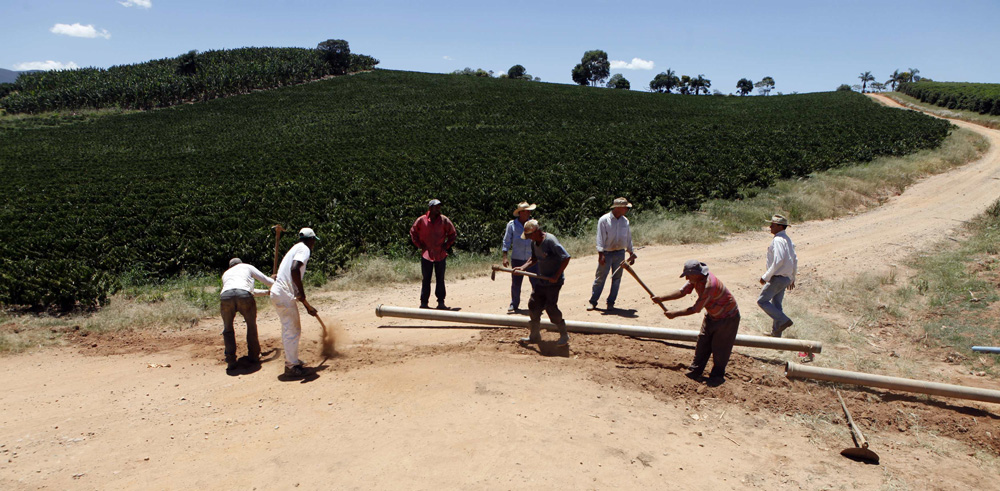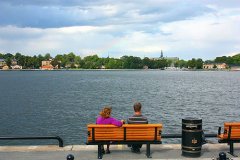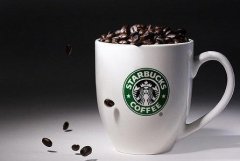Coffee goods fell 23% into a bear market.

International coffee futures are still in a bear market, with futures prices down 23% since April, despite increased rainfall last month easing the drought in Brazil, a major coffee producer and exporter.
Coffee futures have fallen 23 per cent since reaching a two-year peak in April. ICE Futures U.S. Arabica July futures fell 0.7 percent to $1.7115 a pound, down 23 percent from the year's closing high of $2.148 on April 24, reaching the usual definition of a bear market, the data showed. This is partly because rising stocks in the United States offset a decline in output caused by drought in Brazil.
Brazil's Agriculture Minister Neri Geller said Monday that last month's rains eased the impact of the worst drought in 50 years and that Brazil's coffee farmers were facing less crop damage than officials had expected. Geller also said coffee farmers could reap a "bumper harvest" next year. Brazil's crop forecasting agency Conab said last month it lowered its forecast for coffee production this year to 44.6 million bags, down from 46.5 million to 50.2 million bags expected in January. The average bag weighs 60 kilograms (132 pounds).
However, officials may adjust production forecasts again after the harvest season ends. Geller believes the final yield could be higher than 44.6 million bags, and that this year's yield will be enough to set aside a buffer for next year as coffee prices rise and farmers tend to trees more carefully. On the other hand, Mercon Group also pointed out that crop growth in the areas hardest hit by drought is recovering, and Brazil's output this year may reach 50.5 million bags, higher than the US government's estimate of 49.5 million bags in May.
Vision Financial Market analyst John Boyd noted that the revised production forecasts suggest Brazil's drought is not as severe as expected. Brazil's crop is now in harvest season, and at this rate coffee production will yield ideal results this year.
High temperatures and lack of rain have caused coffee prices to soar 55 percent this year and exports to fall. Brazilian coffee-producing regions will export 32.2 million bags of Arabica beans to U.S. companies such as Starbucks and Nestle, down from 38.3 million bags last year.
Important Notice :
前街咖啡 FrontStreet Coffee has moved to new addredd:
FrontStreet Coffee Address: 315,Donghua East Road,GuangZhou
Tel:020 38364473
- Prev

An open-air cafe in Stockholm, Sweden
In fact, the most enjoyable way to relax in Stockholm is to spend half a day in a favorite cafe in many narrow alleys, or simply take a random stroll in quiet or busy alleys.
- Next

China will become Starbucks' largest overseas market
Howard Schultz, global chairman, president and CEO of Starbucks Coffee Group, visited China today and told the outside world in Beijing that Starbucks has so far opened more than 1200 stores in 68 Chinese cities.
Related
- What is the standard process for the purpose of coffee cup testing? What is the difference between hand-brewed coffee and cup testing?
- How to use hand-brewed coffee paragon small golden balls? How does cold coffee lock in the aroma of coffee?
- Is American coffee black? What is the difference between American coffee and drip coffee?
- Unexpected! Well-known tea beverage brand Lele Tea will withdraw from the Zhengzhou market!
- Starbucks enters the fashion and beauty industry?! Netizen: Give me an ice American eye cream
- Why can American refills for free? The difference between Americano and American drip pot coffee
- Being chased out of the rain in front of Starbucks?! Store: Sheltering from rain under umbrellas poses a safety hazard
- The white moonlight has changed?! Lucky launches "Big Winter Pear American"
- Hand-brewed coffee three-stage method, high-sweet and universal brewing method to share! What does the high sweet water level of hand-brewed coffee mean?
- What is the difference between raw, refined and full espresso coffee? How to extract espresso and taste good?

